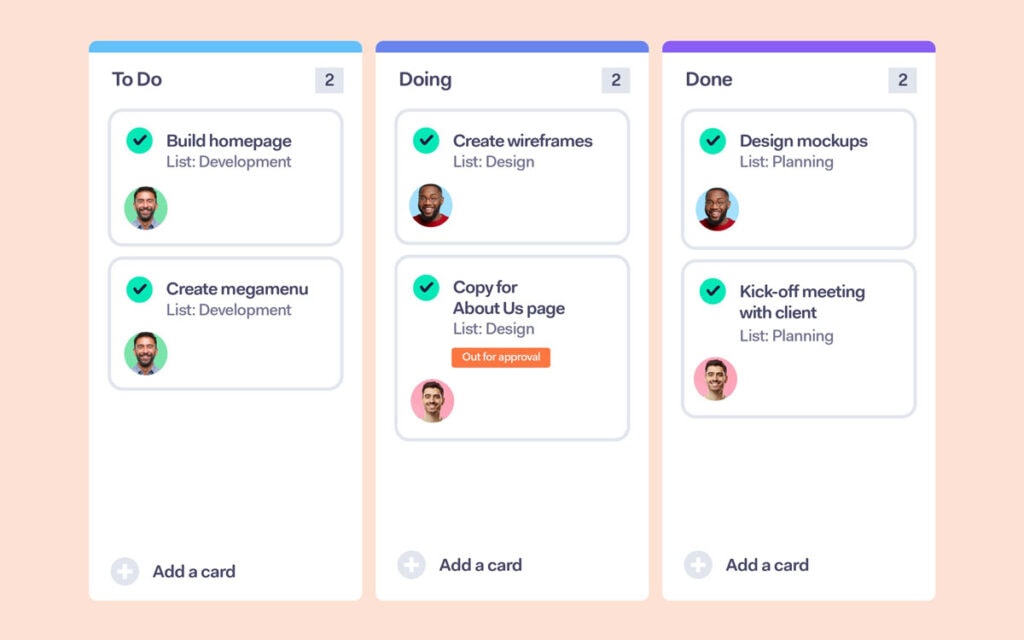
21 Apr Guide To Hiring a Web Development Team
Guide To Hiring a Web Development Team
Going digital is all the rage all over the world right now.
Digital transformation is no more a nice-to-have but an absolute mandatory requirement to keep up with the evolving market conditions and, most importantly, the severe mobility restrictions caused by the pandemic.
But no matter how much of a rush you are into going digital and creating a website, you need to be cautious about whom you are hiring for your web development project.
You have to prepare yourself, set down the proper guidelines, and determine your long-term and short-term goals, technical requirements, etc.
The success of your digital transformation and building a website from scratch largely depends on your tech team and the technology stack you choose.
About 25% of all web development projects fail due to common reasons like late software deliveries, changing requirements, and insufficient time and budget.
You need to have a good solid plan to ensure there is no ambiguity and have well-defined goals.
How To Plan Your Web Development Project To Avoid Risks
Here is how you can avoid putting yourself in sticky situations and ensure to make the best out of your web development team.
Detailed Plan
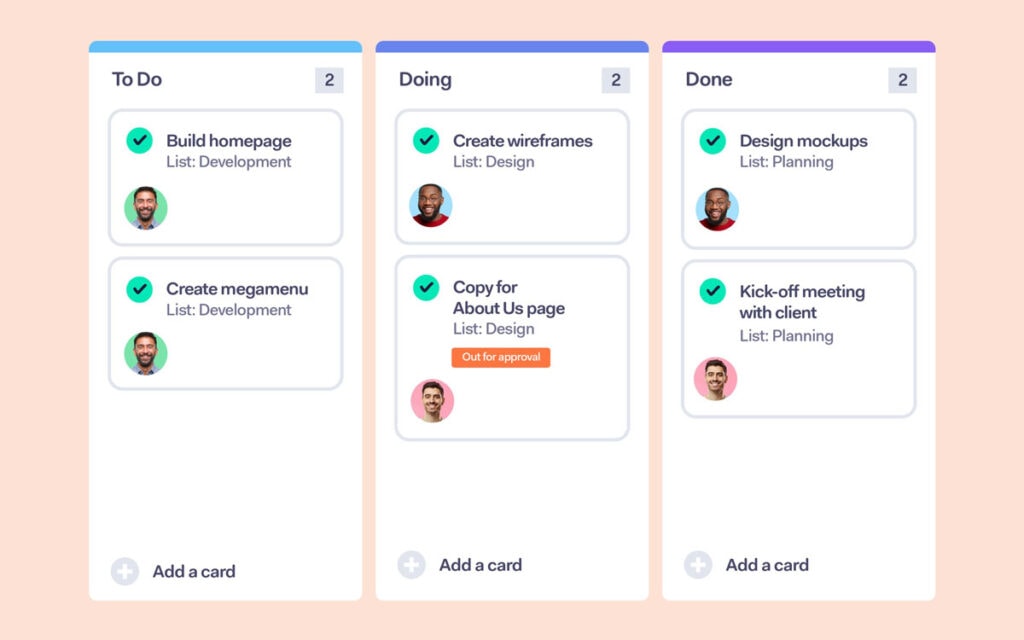
You need to have a detailed plan about the deliverables, deadlines, and work estimates and have some form of documentation that you can look up through the project lifecycle.
You also need to establish a proper change management plan and process that allows you to control the changes and keeps your project within the scope.
Include the cost estimates for each task and assess it against your time constraints, priorities and then assign the tasks accordingly.
The primary reason why many applications fail is that they don’t reach the intended audience on time.
Your competition could make a faster move and capture the market, or your feature itself may go out of relevance by the time you make your launch.
So always try to bring a quality functional product to the market as soon as possible, and then you can always plan for incrementally adding on new features and new release updates.
Quality Tech Talent
If your project plan is the blueprint for your software, your tech team acts as the screws and bolts, bringing it all together as a viable product.
Do not scrunch on your investments that go into hiring quality tech talents.
Hiring cheap engineers may seem like an intelligent move only on the day you hire them.
It will be a costly affair when you factor in all the extra training costs, missed deadlines, errors due to poor communication, and lack of skills to get the exact results you need.
Web app development presents you an opportunity to leverage the growing digitisation around you.
Just like any other business development effort, it requires investment. And it is up to you to invest in the right talents to make it a fruitful venture.
Besides the technical evaluations, you can also employ mindset evaluation tests, face-to-face interviews and collect feedback from their previous clients and portfolio details.
Choose Your Technology Stack
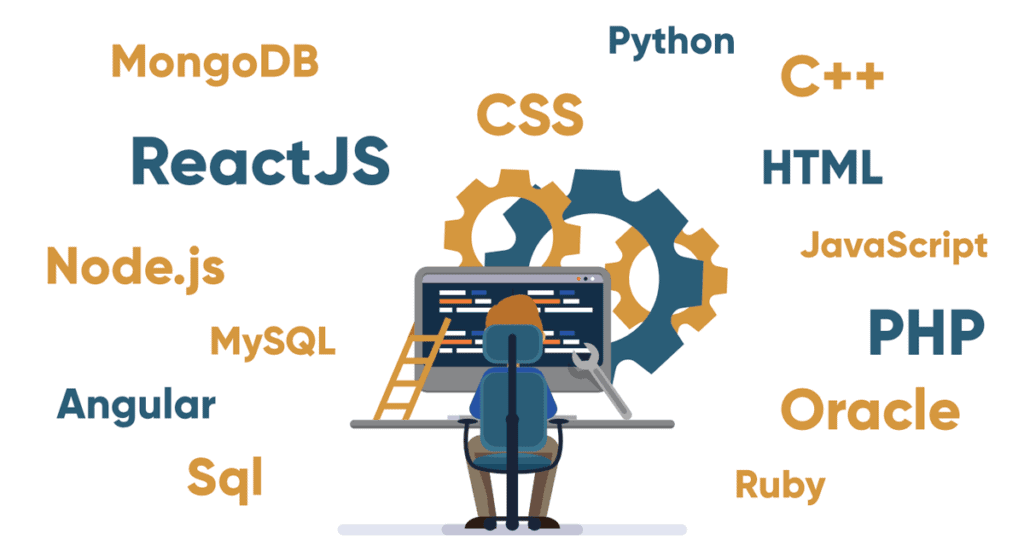
Before even starting the hiring process, you should choose your technology stack.
It will give you the direction of what skills you should be looking for in your new hires.
Depending on the technology you use, you should screen the candidates based on their specific skill sets that match your technical requirements.
Here are some tips to help you choose web development technologies for your projects.
Factors To Consider
First, start with your actual business problem and identify the exact technical requirements you need to create your website.
If you are running a complex project, you will need scalable and robust technology stacks that might require a higher initial investment with a possibility of higher ROI in the long term.
Similarly, if your project is a simple one-off task, you need to pick the right technology and tool based on your budget.
You will also have to segregate your technology needs into the various parts of a web development project, such as the:
- Front-end development
- Back-end development
- Databases
For each part of the web development, you will have to identify the right technology stack that fits your particular project needs.
Frontend Development Considerations
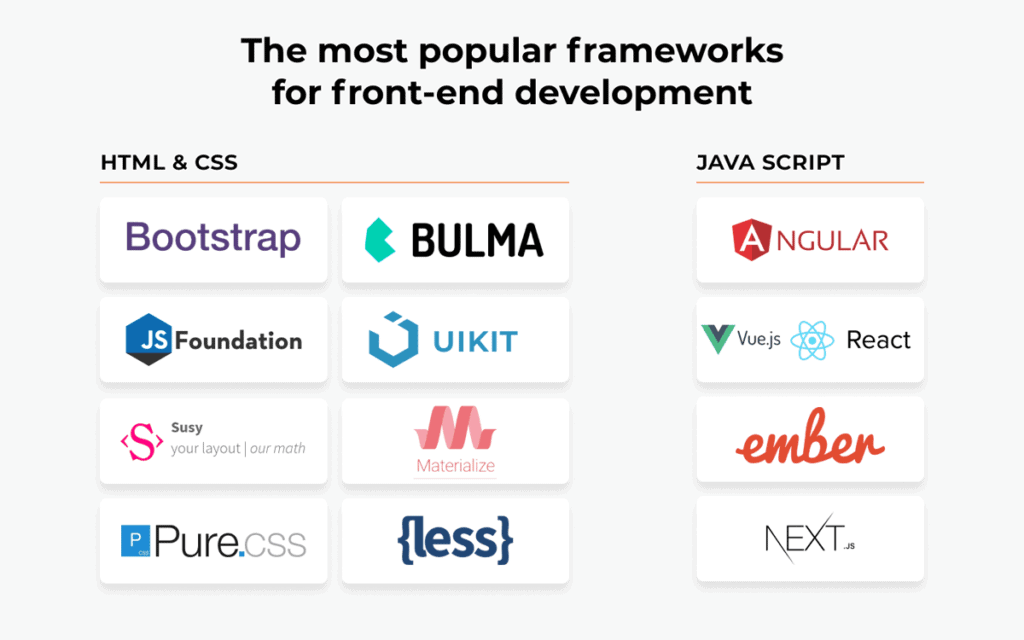
The frontend part deals with your website’s web page that determines the look of the overall user experience.
It involves two major technical components:
- HTML and CSS
- Scripting (JS)
You can choose several architectural models for your project and select a technology that best fits your web page design.
Besides the pure Javascript used to program the web pages, you can also choose from a wide variety of JS-based frontend frameworks and libraries like React, AngularJs, VueJs, and more due to your project needs.
Back-end Development Considerations
Back-end development deals with developing server-side components for your website, constructing the web APIs, and programming the data operations.
There is a wide range of backend technologies like:
- Ruby on Rails
- Python (Django)
- PHP (Laravel)
- Java (Spring)
- Scala (Play)
- NodeJS
Research each framework and programming language’s specific features and advantages to choosing the right tech for your project.
You should also pick the database software you will be using. For most new websites, you will have to build databases from scratch, and if you already have a database, you will need to integrate it with your website.
There are two major types of databases – relational and non-relational databases.
Some popular database choices you can check out are:
- MySQL (relational)
- PostgreSQL (relational)
- MongoDB (non-relational)
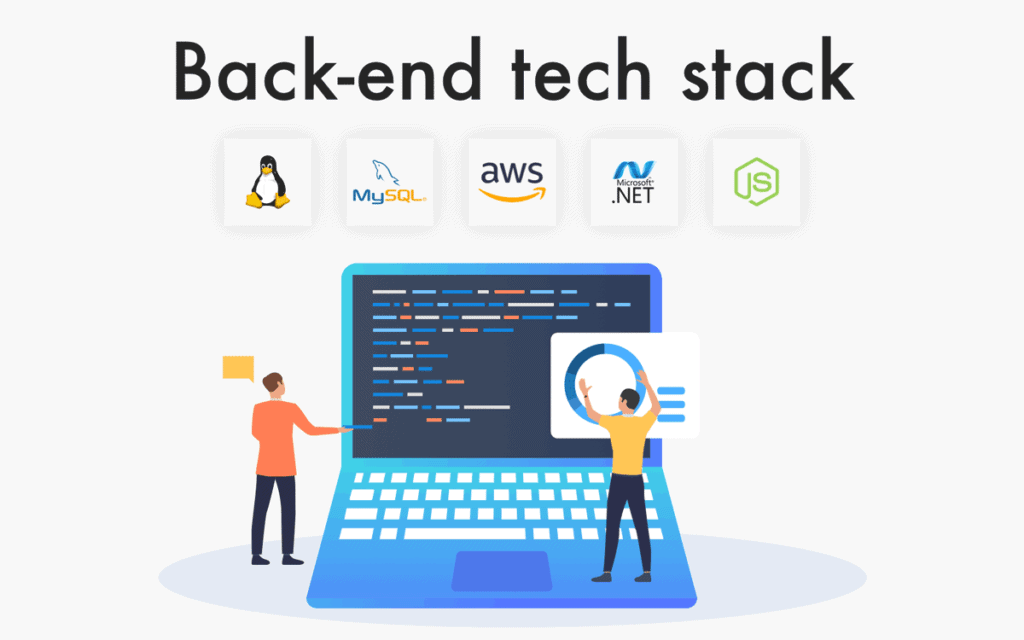
Website Requirements
Besides your website’s functional requirements, you will also have to consider the following aspects to ensure your website can keep the visitors engaged and become successful.
User Experience
Pay good attention to your website’s design as it can either make or break your project goals.
The design has a significant influence on how visitors will use the website, and thus, you need to be thorough with it.
You need to understand the end-user behaviour and craft well-designed web pages that are accessible and easy to use.
Scalability
Web applications must be built with scalability in mind as they can multiply in traffic and user base.
Development Time
The quicker to market, the better it will be for your pocket. Speed is a crucial factor that determines the success of every web development project.
A website that is excellent in performance and features but cannot make it to the market on time will not recover the costs that went into making it.
Do consider using technologies like CDN and web frameworks that will help fasten the development process efficiently.
Hire The Right People
Once you have determined the technology stack for your project, make sure you hire a skilled web development team who can work on the technology stack and deliver the project on time.
Look at your web developer’s previous experiences and ask the right questions to pick out people with the relevant skills.
Security
Cyberattacks can be a costly affair to deal with for any company, significantly growing companies whose reputation is also at stake.
You will also have to stay compliant with data regulation policies like GDPR and local laws.
Critical Roles For A Website Development Project
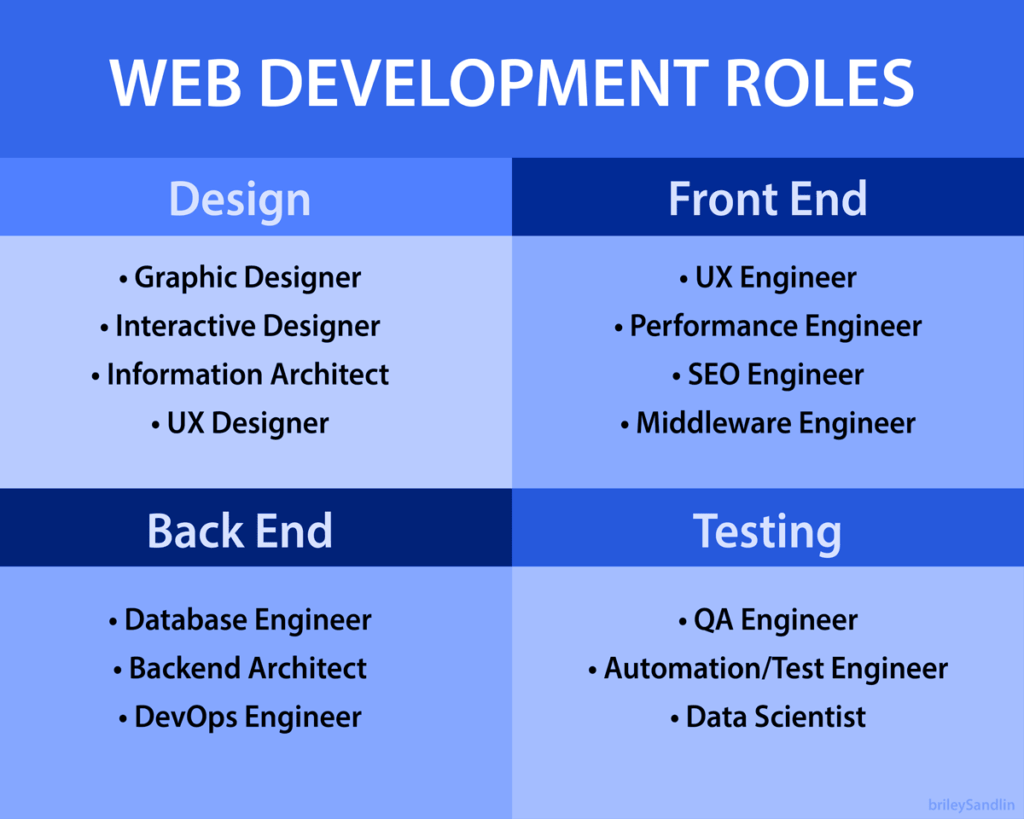
Solutions Architect
This role is responsible for designing your system architecture and application design.
It is a primary role that would be useful to hire as soon as possible to create a complete vision of your future website.
UI/UX Designer
A UI designer helps you design your website to have the best HCI components and elements that would make your site easy to use, easy to navigate and provide a quality user experience.
Back-end Engineer(s)
Backend engineers help design and develop the backend components like server development, database development, and build APIs for your web applications.
They also help apply the business logic to your application in the most efficient manner.
Frontend Developer(s)
Frontend developers help build the presentation part of your website and help you implement the UI as designed and envisioned by your UI/UX designers.
QA Engineer
QA engineers help create test cases, test plans and execute a proper testing framework for your website.
They are responsible for designing the alpha/beta testing of your product to ensure bug-free quality software. They can also develop test automation suites.
Business Analyst
A business analyst’s primary role is to help organisations find better ways to improve the current processes and systems.
They will be analysing the available data, identifying existing problems and solutions to overcome the problems cost-effectively.
Product Owner/Manager
A product owner or manager is responsible for spearheading the development team and keeping track of the project progress.
They will have to identify the customer needs and business objectives and make sure the development team is on the way to fulfilling the established goals.
Where to hire your web development team
When it comes to the hiring process, there are several options for searching for tech specialists.
You can look for freelance software engineers on different job boards and portals. However, it is not the best choice for a long project.
It may take some time to validate if the candidate is suitable for you, and freelancers often change projects and clients.
When you need an entire team for your web development, you can contact software development agencies to provide you with all the required tech talent. But it may take some time to find the needed engineers.
One more option of hiring the vetted software developers is to use a marketplace for a rapid tech talent search.
You can describe your project and requirements and get the wanted specialists within a few days.
Conclusion
As you can see, your team needs to have clear roles and the people with the right skills assigned to each of the roles to ensure a smooth development process.
You will have to create the task estimates for each team member and their roles to quantify your project metrics and goals.
When you hire a web development team for these roles, make sure you go for quality and not just the price.
Web development requires careful investment into the right talents to be successful.
Pick the right people for the right jobs.



